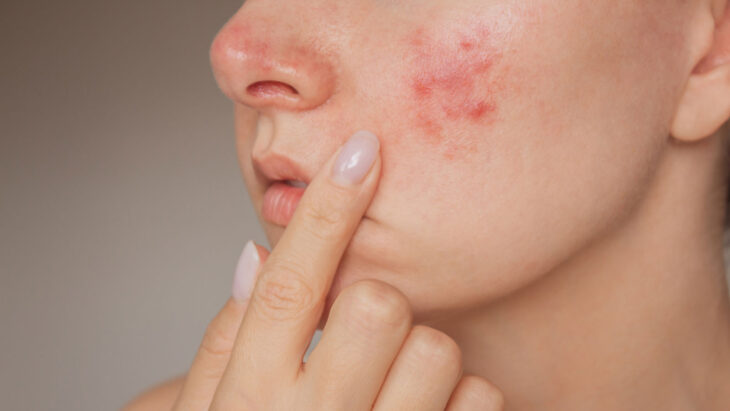Do you have acne-like breakouts that nothing seems to clear? Are you bothered by frequent facial sunburns? Does your face often feel warm? When you apply certain skin care products, does your skin sting or burn? If you answered “yes” to these questions, you might have rosacea.
Rosacea is a chronic skin condition characterized by redness, flushing and visible blood vessels on the face. The most common places to find symptoms of rosacea include your nose, cheeks and forehead. It typically affects fair-skinned individuals and can cause discomfort and cosmetic concerns.
Left untreated, inflammatory bumps and pimples often develop, and in severe cases — particularly in men — the nose may grow swollen and bumpy from excess tissue. In as many as 50 percent of patients, the eyes are also affected, feeling irritated and appearing watery or bloodshot.
Each year, the National Rosacea Society (NRS) designates April as Rosacea Awareness Month to educate the public on the impact of this chronic and complex skin condition that affects an estimated 16 million Americans.
CAUSES AND TRIGGERS
The exact cause of rosacea is unknown, but several factors may contribute to its development, including genetics, blood-vessel abnormalities, immune system disfunction and/or environmental factors.
Rosacea is a condition that has cycles of “exacerbations” (flares) and “remissions” (calming down). Anything that causes a flare is called a “trigger,” and triggers can be different for everyone. Common triggers include sun exposure, alcohol, exercise and stress.
CONTROLLING THE CONDITION
Although there is currently no cure for rosacea, symptoms sometimes can be controlled with medicine, gentle skin care and avoiding triggers.
Before diagnosis, many rosacea sufferers may turn to skincare products and cosmetics to treat or cover these signs and symptoms, mistaking them for a temporary condition like sunburn or acne. Rosacea often makes skin sensitive and easily irritated, so proper skin care plays a key role in controlling this condition.
Once an official diagnosis occurs, it’s important to choose a gentle skincare routine consisting of rosacea-friendly skin care products. These products should be fragrance free and non-irritating. It’s best to focus on cleansing with a mild cleanser, moisturizing regularly and using sunscreen daily.
REDUCING FLARE-UPS
The sun can worsen rosacea any time of the year. To reduce rosacea flare-ups caused by the sun, as well as to prevent skin cancer and premature aging, dermatologists recommend that you:
- Seek shade when possible.
- Wear sun-protective clothing, which includes a wide-brim hat, and sunglasses that protect from ultraviolet radiation.
- Apply sunscreen that offers broad-spectrum protection, SPF 30 or higher, and water resistance. To protect your skin, apply sunscreen to all skin not covered by clothing. Even on cloudy days, it’s essential to use sunscreen.
If you find that a sunscreen irritates your skin, look for a sunscreen that contains:
- Zinc oxide, titanium dioxide or both (also called mineral sunscreen)
- Silicone (may be listed as silicone, dimethicone or cyclomethicone)
- No fragrance (label may say “fragrance free,” but if it says “unscented,” choose another sunscreen)
Making these tips a part of your skin care routine can help you take better care of your rosacea-prone skin.



